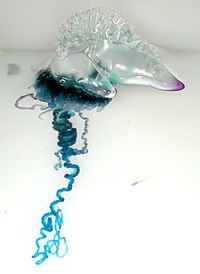
Dynamic Covalent Bond Cross-linked Luminescent Silicone Elastomer with Self-healing and Recyclable Property.
Sign Up to like & getrecommendations! Published in 2022 at "Macromolecular rapid communications"
DOI: 10.1002/marc.202100885
Abstract: Two aldehyde-modified tetraphenylene derivatives with different functionality are synthesized and exhibit different fluorescence properties. By incorporating tetraphenylene derivatives into polydimethylsiloxane (PDMS) networks, two elastomers are prepared through dynamic covalent crosslinking. The elastomers show excellent fluorescence… read more here.
Keywords: tetraphenylene derivatives; dynamic covalent; self healing; covalent bond ... See more keywords

Self-assembled gels formed by covalent-bond that is able to include drug
Sign Up to like & getrecommendations! Published in 2019 at "European Polymer Journal"
DOI: 10.1016/j.eurpolymj.2019.05.055
Abstract: Abstract A mixture of the calix[4]arene including hydrazine and dipheniyl aldehyde at different positions formed gel in DMSO by the hydrazone reaction under acidic conditions. These organogels were transformed into hydrogels without shape change by… read more here.
Keywords: covalent bond; assembled gels; drug; gels formed ... See more keywords

Fabrication of a Smart Nanofluidic Biosensor Through a Reversible Covalent Bond Strategy for High-efficiency Bisulfite Sensing and Removal.
Sign Up to like & getrecommendations! Published in 2020 at "Analytical chemistry"
DOI: 10.1021/acs.analchem.0c00131
Abstract: Bioinspired nanochannel based biosensors have been widely applied for sensing ions, small molecules and biomolecules. However, the low selectivity and difficulty in recycle sensing still heavily hamper their widespread applications. Herein, we designed and fabricated… read more here.
Keywords: high efficiency; biosensor; covalent bond; sensing removal ... See more keywords

Covalent Bond between the Lys-255 Residue and the Main Chain Is Responsible for Stable Retinal Chromophore Binding and Sodium-Pumping Activity of Krokinobacter Rhodopsin 2.
Sign Up to like & getrecommendations! Published in 2023 at "Biochemistry"
DOI: 10.1021/acs.biochem.3c00168
Abstract: Microbial rhodopsins are light-receptive proteins with various functions triggered by the photoisomerization of the retinal chromophore from the all-trans to 13-cis configuration. A retinal chromophore is covalently bound to a lysine residue in the middle… read more here.
Keywords: bond; retinal chromophore; rhodopsin; covalent bond ... See more keywords

Programmable Assembly of Peptide Amphiphile via Noncovalent-to-Covalent Bond Conversion
Sign Up to like & getrecommendations! Published in 2017 at "Journal of the American Chemical Society"
DOI: 10.1021/jacs.7b03878
Abstract: Controlling the number of monomers in a supramolecular polymer has been a great challenge in programmable self-assembly of organic molecules. One approach has been to make use of frustrated growth of the supramolecular assembly by… read more here.
Keywords: amphiphile via; assembly peptide; bond; covalent bond ... See more keywords

Fire-derived organic matter retains ammonia through covalent bond formation
Sign Up to like & getrecommendations! Published in 2019 at "Nature Communications"
DOI: 10.1038/s41467-019-08401-z
Abstract: Fire-derived organic matter, often referred to as pyrogenic organic matter (PyOM), is present in the Earth’s soil, sediment, atmosphere, and water. We investigated interactions of PyOM with ammonia (NH3) gas, which makes up much of the… read more here.
Keywords: matter; covalent bond; derived organic; fire derived ... See more keywords

An electron acceptor featuring a B-N covalent bond and small singlet-triplet gap for organic solar cells.
Sign Up to like & getrecommendations! Published in 2022 at "Chemical communications"
DOI: 10.1039/d2cc03172h
Abstract: BNTT2F, an electron acceptor featuring a B-N covalent bond and singlet-triplet gap as low as 0.20 eV via the multiple resonance effect, is developed for organic solar cells. The optimized device based on BNTT2F offered… read more here.
Keywords: singlet triplet; covalent bond; electron acceptor; acceptor featuring ... See more keywords

Expandability of the Covalent Bond: A New Facet Discovered in Extremely Long Csp3-Csp3 Single Bonds
Sign Up to like & getrecommendations! Published in 2020 at "Bulletin of the Chemical Society of Japan"
DOI: 10.1246/bcsj.20200374
Abstract: Molecules with an extreme structural parameter, such as an elongated C-C bond, have attracted much attention due to their special properties, which ordinary molecules do not have. Stabilized hexaph... read more here.
Keywords: bond; covalent bond; csp3; new facet ... See more keywords

HNF4α Is a Covalent Bond-Forming Receptor.
Sign Up to like & getrecommendations! Published in 2021 at "Journal of nutritional science and vitaminology"
DOI: 10.3177/jnsv.67.126
Abstract: HNF4α is a nuclear receptor whose ligands are fatty acids. HNF4α is a target molecule for drug discovery research and thus we tested its covalent binding ability to investigate the possible development of covalent modifiers… read more here.
Keywords: covalent bond; covalent; oxo pufas; receptor ... See more keywords

The location of the chemical bond. Application of long covalent bond theory to the structure of silica
Sign Up to like & getrecommendations! Published in 2023 at "Frontiers in Chemistry"
DOI: 10.3389/fchem.2023.1123322
Abstract: Oxygen is the most abundant terrestrial element and is found in a variety of materials, but still wanting is a universal theory for the stability and structural organization it confers. Herein, a computational molecular orbital… read more here.
Keywords: structure; covalent bond; oxygen; long covalent ... See more keywords

Resonant Ionic, Covalent Bond, and Steric Characteristics Present in 1Σu+ States of Li2
Sign Up to like & getrecommendations! Published in 2022 at "Molecules"
DOI: 10.3390/molecules27113514
Abstract: The molecular bonding in the excited states of the alkali dimers involves the resonant ionic, covalent bond and steric interactions. We show here the case of the 1Σu+ states of Li2 by ab initio calculation.… read more here.
Keywords: resonant ionic; covalent bond; bond steric; ionic covalent ... See more keywords